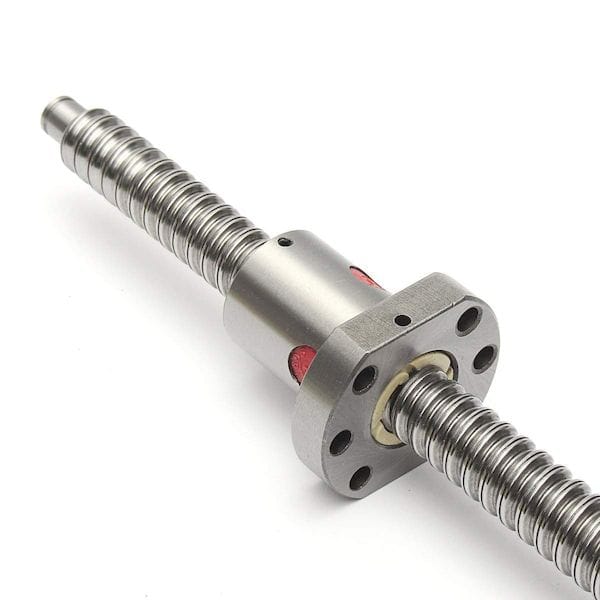![A typical ball screw mechanism [Source: Filament Innovations]](https://fabbaloo.com/wp-content/uploads/2020/05/image-asset_img_5eb0933fcec7e.jpg)
A 3D printer manufacturer is experimenting with the use of ball screw motion systems for their upcoming machines.
Pennsylvania-based Filament Innovations has been around for a few years producing the BFP-Icarus series of professional 3D printers. These devices sport a number of robustness-focused features, including linear rails, CNC-grade stepper motors and Dyze Design extruders. They’re also quite large. The “small” version has a build volume of 457 x 406 x 610 mm, whereas the “X” version increases the Z-axis to a stupendous 914mm.
The machines can print high-temperature materials with a 400C hot end and a print plate temperature of up to 110C. This enables the BFP-Icarus line to 3D print many materials including PLA, ABS, PET-G, TPU, Nylon, Carbon Fiber composites and “etc”.
Their print plate is either a 5mm thick, rock-hard carbon fiber plate or a GECKO flex plate.
One interesting feature is that the machines have a default nozzle diameter of 0.6mm, larger than the de-facto industry-standard 0.4mm. This is likely because the print volumes are so enormous the prints should be printed more quickly with a larger nozzle.
The machines have a number of convenience features, including self-leveling, color touchscreen, various networking options and an out-of-filament detection system.
Now we see they are experimenting with the use of ball screws for presumably a new motion system on an upcoming machine. In a LinkedIn post, Filament Innovation’s CEO, Michael Gorski, said:
“Speed is key! Our ballscrew setup can move at 250mm/s, but how fast can it actually print? I mean ACTUALLY print with good, reliable, and consistent results? Working on an orthotic right now at a real print speed of 100mm/s, 0.6mm nozzle, 0.2mm layer height, CF-ABS.”
Ball Screw Mechanism
The ball screw is a threaded rod upon which is mounted a block containing ball bearings hidden inside. As the screw rotates, the block slides along the rod with the ball bearings eliminating friction. This makes for a very robust motion system. Wikipedia explains:
“As well as being able to apply or withstand high thrust loads, they can do so with minimum internal friction. They are made to close tolerances and are therefore suitable for use in situations in which high precision is necessary. The ball assembly acts as the nut while the threaded shaft is the screw.”
High-Temperature and 3D Printer Belts
This sounds ideal for use in a 3D printer. However, virtually all 3D printers to date, including industrial-grade machines, use belts to generate motion. While belts are relatively inexpensive and lightweight, they do have a series of potential issues:
-
They could wear out and break
-
They stretch and get slack
-
They can slip, causing print failures
-
They’re sometimes hard to install and tighten
-
They wear out prematurely when exposed to high heat
That last point is important: most high-temperature 3D printers have to locate the motion system outside of the build chamber to avoid exposing belts to heat. This complicates the design and likely introduces more failure modes.
Roboze Rack and Pinion System
One vendor of high-temperature 3D printers, Roboze, overcomes this issue by using a rack and pinion motion system instead of belts. It seems that Filament Innovations is doing something similar here but with a completely different motion concept.
That’s all interesting, but Filament Innovations has not yet announced any new products using the ball screw mechanism. We’re hoping to see one soon.
Via LinkedIn











An Austrian company has developed an incredibly sophisticated end-to-end automation system for metal 3D print post processing.